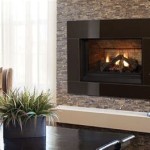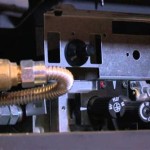Installing a Hearth: A Comprehensive Guide
Adding a hearth to a home not originally equipped with one can significantly enhance its ambiance and potentially increase its value. The process involves careful planning, adherence to safety regulations, and often necessitates professional assistance. This article addresses the key considerations and steps involved in successfully integrating a hearth into an existing residence.
Before any physical work commences, a comprehensive assessment of the home's structural integrity is essential. Load-bearing capacity of the floor beneath the intended hearth location must be verified. The weight of the hearth appliance, including the unit itself, any surrounding masonry or finishing materials, and stored fuel if applicable, must be accounted for. Consulting a structural engineer is often recommended to ensure the floor can safely bear the added load and to identify any necessary reinforcement measures.
Local building codes and regulations regarding hearth installations are paramount and vary depending on the municipality. These codes typically dictate minimum clearances from combustible materials, chimney requirements, and venting specifications. Failure to comply with these regulations can lead to safety hazards, costly rework, and potential legal repercussions. Thorough research and communication with the local building department are crucial prior to initiating any construction activities. Required permits must be obtained before proceeding with the installation.
Choosing the Right Type of Hearth Appliance
The selection of the appropriate hearth appliance is a critical decision influenced by factors such as heating requirements, aesthetic preferences, existing fuel sources, and budget. Several options are available, each with distinct advantages and disadvantages. These include wood-burning, gas, and electric models. Pellet stoves, while less common, also represent a viable alternative.
Wood-burning hearths offer a traditional appeal and are often appreciated for their authentic flame and radiant heat. However, they necessitate a dedicated chimney, require a readily available and sustainable wood supply, and demand diligent maintenance to ensure safe and efficient operation. Gas hearths provide convenience and ease of use, typically igniting with the push of a button. They can be fueled by natural gas or propane and often feature realistic flame patterns. Venting options vary depending on the specific model, with some requiring direct venting to the outside and others utilizing existing chimneys. Electric hearths are the simplest to install, as they do not require venting or fuel lines. They generate heat using electricity and often incorporate realistic flame effects. While they provide supplemental heating, they are generally not as efficient as wood-burning or gas models.
Pellet stoves utilize compressed wood pellets as fuel, offering a compromise between the convenience of gas and the renewable nature of wood. They require electricity to operate and feature automatic fuel feeding systems, providing consistent and controlled heat output. The choice hinges on individual needs and priorities, considering factors like cost, environmental impact, and convenience.
Chimney and Venting Considerations
The chimney or venting system is integral to the safe and effective operation of a hearth. Wood-burning hearths necessitate a properly constructed and maintained chimney to safely exhaust combustion gases. The chimney must be appropriately sized for the hearth appliance and adhere to all applicable building codes. Regular inspections and cleaning are essential to prevent creosote buildup, which can pose a significant fire hazard.
Gas hearths offer various venting options, including direct vent, B-vent, and vent-free models. Direct vent hearths draw combustion air from outside and exhaust directly outdoors through a sealed vent system, minimizing indoor air pollution. B-vent hearths utilize existing chimneys or require the installation of a dedicated B-vent pipe, drawing combustion air from the room. Vent-free hearths do not require venting, but their use is subject to specific restrictions and regulations due to concerns about indoor air quality. It is crucial to select a venting system that is compatible with the chosen hearth appliance and that complies with all applicable codes. Electric hearths do not require any venting.
Proper installation of the chimney or venting system is paramount to ensure safe and efficient operation. This may involve professional installation, especially for wood-burning and gas hearths, to guarantee compliance with building codes and to minimize the risk of carbon monoxide poisoning or other safety hazards. Regular maintenance and inspections are crucial to ensure the continued safety and effectiveness of the venting system.
Installation Process and Safety Measures
The installation process varies depending on the type of hearth appliance and the specific circumstances of the home. It is generally advisable to engage qualified professionals for the installation, particularly for wood-burning and gas models. This ensures that the installation is performed correctly and in accordance with all applicable codes and regulations.
The installation typically involves preparing the hearth area, including reinforcing the floor if necessary, and constructing a non-combustible hearth pad. The hearth appliance is then installed according to the manufacturer's instructions, ensuring proper clearances from combustible materials. The chimney or venting system is connected, and all connections are thoroughly inspected for leaks. Gas lines must be installed by a licensed gas fitter, and electrical connections must be made by a qualified electrician.
Safety is a paramount consideration throughout the installation process. Wear appropriate personal protective equipment, such as gloves, eye protection, and a dust mask. Ensure adequate ventilation to prevent the buildup of dust or fumes. Follow all safety instructions provided by the manufacturer and adhere to all applicable building codes. After the installation is complete, a thorough inspection should be conducted to verify that all components are properly installed and functioning correctly. Carbon monoxide detectors should be installed in the vicinity of the hearth to provide early warning of any potential carbon monoxide leaks. Regularly scheduled maintenance and inspections are essential to ensure the continued safe and efficient operation of the hearth.

Your Home Doesn T Have A Fireplace And You Want To Add One

5 Types Of Fireplaces For Apartments Homes Without Chimneys Modern Blaze

How To Install Fireplace At Your Home Happho

4 Things Every Homeowner Should Know Before Installing A Fireplace

How To Remove A Fireplace In 8 Steps

Zero Clearance Vs Prefabricated Fireplace Full Service Chimney

I Built A Fireplace Easier Than Thought

16 Empty Fireplace Ideas How To Style A Non Working

Simple Guide To Creating A False Chimney T In New Build Property

How To Install A Gas Fireplace Diy Built In
Related Posts








